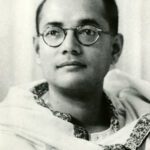Mimar Sinan – a name synonymous with excellence in Ottoman architecture. As earthquakes continue to rattle regions prone to seismic activity, one can’t help but wonder: How did the historic structures designed by Mimar Sinan withstand the test of time?
The Enigmatic Mimar Sinan
The secret to Mimar Sinan’s enduring architectural creations lies in his innovative techniques. Born in central Anatolia in the 1490s, his lineage remains a subject of debate, with various theories about his origins. However, it is widely acknowledged that he converted to Islam.
Sinan settled in Istanbul, formerly Constantinople, a city situated in a highly active earthquake zone. Despite the challenging environment, the structures he designed have endured through the centuries, thanks to his meticulous planning and construction methods.
The Architect Devoted to Craft
Hailing from a family of skilled stone masons and carpenters, Sinan inherited a deep passion for building structures. His life’s work was dedicated to serving the Ottoman royal family, with a special emphasis on his role as the construction officer for Sultan Suleyman I.
Innovative Techniques for Earthquake Resistance

Fortifying the Hagia Sophia
One of Sinan’s notable achievements was the fortification of the Hagia Sophia, originally a church converted into a mosque by the Ottomans. The dome of this historic structure had experienced early collapses and subsequent repairs in the pre-Ottoman era. However, during and after Sinan’s time, there was a remarkable absence of long-term repair needs. This success can be attributed to Sinan’s visionary designs.
A Legacy of Over 300 Structures
Over his illustrious 40-year career, Mimar Sinan left an indelible mark on Ottoman architecture. Some of his most renowned creations include the Suleyman I the Magnificent Mosque, Sehzade Mosque, and Selim Mosque in Edrine.
Innovative Building Materials and Techniques

Sinan used a unique mortar known as Horasan mortar, composed of lime, clay, sand, and unconventional ingredients like ostrich egg whites and onions. After laying the foundation, he allowed it to settle for at least a year, allowing the structure to adapt to the earth’s conditions. He also incorporated absorbent materials to dissipate earthquake shock – a concept that would find parallels in Japan’s use of seismic isolators centuries later.
Advanced Structural Monitoring
Sinan’s commitment to earthquake resistance extended to the use of rotating columns to assess structural damage. If no damage was sustained, the columns would remain stationary, a brilliant early form of structural monitoring.
Safeguarding His Creations
Mimar Sinan not only focused on the stability of his designs but also took measures to protect his creations from potential threats. He redistributed foundation loads using frames and side walls, and he channeled dome loads through arches – a common technique employed in earthquake-prone areas.
In the case of Ayasofya, he added supporting blocks and minarets to safeguard against collapse, demonstrating his foresight and engineering prowess.
Holistic Approach to Preservation
Mimar Sinan’s meticulous attention to detail and innovative engineering have ensured the survival of his grand architectural wonders through the ages. His legacy stands as a testament to the enduring power of human ingenuity and craftsmanship in the face of natural challenges.







